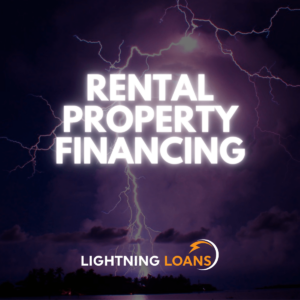-
Table of Contents
- NYC Sustainability Chief Warns CRE Owners of Fines for Inaction on Climate
- The Urgency of Climate Action in Commercial Real Estate
- Understanding the Regulations
- Case Studies: Successful Implementation of Sustainable Practices
- The Role of Mortgage Lenders in Promoting Sustainability
- Green Financing Options
- Benefits of Sustainable Practices for CRE Owners
- FAQs on Climate Action and Mortgage Financing
- What are the penalties for non-compliance with Local Law 97?
- How can mortgage lenders support CRE owners in meeting sustainability goals?
- What are the long-term benefits of investing in sustainable practices?
- Conclusion
NYC Sustainability Chief Warns CRE Owners of Fines for Inaction on Climate

As climate change continues to pose significant risks to urban environments, New York City’s sustainability chief has issued a stern warning to commercial real estate (CRE) owners: take action on climate initiatives or face substantial fines. This article delves into the implications of this warning, the importance of sustainable practices in the CRE sector, and how mortgage lenders can play a pivotal role in facilitating these changes.
The Urgency of Climate Action in Commercial Real Estate
New York City has been at the forefront of implementing stringent climate policies aimed at reducing carbon emissions and promoting sustainability. The city’s sustainability chief has emphasized that CRE owners must comply with these regulations or risk facing hefty fines. This urgency is driven by the need to mitigate the adverse effects of climate change, which include rising sea levels, increased frequency of extreme weather events, and deteriorating air quality.
Understanding the Regulations
The regulations in question are part of New York City’s broader climate action plan, which includes Local Law 97. This law mandates that buildings over 25,000 square feet must meet specific carbon emission limits by 2024, with even stricter limits set for 2030. Failure to comply with these limits can result in fines that could significantly impact a building owner’s financial standing.
Case Studies: Successful Implementation of Sustainable Practices
Several CRE owners in New York City have already taken proactive steps to comply with these regulations. For instance, a prominent office building in Manhattan underwent a comprehensive energy retrofit, which included upgrading HVAC systems, installing energy-efficient lighting, and implementing advanced building management systems. As a result, the building not only met the required emission limits but also saw a significant reduction in operating costs.
The Role of Mortgage Lenders in Promoting Sustainability
Mortgage lenders have a crucial role to play in promoting sustainability within the CRE sector. By offering green financing options, lenders can incentivize building owners to invest in energy-efficient upgrades and sustainable practices. These financing options often come with favorable terms, such as lower interest rates and longer repayment periods, making it easier for owners to undertake costly retrofits.
Green Financing Options
Green financing options are designed to support projects that have a positive environmental impact. These can include:
- Energy-efficient mortgages (EEMs)
- Green bonds
- Sustainability-linked loans
By leveraging these financing options, CRE owners can access the capital needed to implement sustainable practices without straining their financial resources.
Benefits of Sustainable Practices for CRE Owners
Adopting sustainable practices offers several benefits for CRE owners, including:
- Reduced operating costs through energy savings
- Increased property value and marketability
- Enhanced tenant satisfaction and retention
- Compliance with regulatory requirements, avoiding fines
FAQs on Climate Action and Mortgage Financing
What are the penalties for non-compliance with Local Law 97?
Penalties for non-compliance with Local Law 97 can be substantial, with fines calculated based on the amount of excess emissions. These fines can run into thousands of dollars per year, significantly impacting a building owner’s bottom line.
How can mortgage lenders support CRE owners in meeting sustainability goals?
Mortgage lenders can support CRE owners by offering green financing options that provide the necessary capital for energy-efficient upgrades. Additionally, lenders can offer guidance on best practices and connect owners with reputable contractors and service providers.
What are the long-term benefits of investing in sustainable practices?
Investing in sustainable practices can lead to long-term benefits such as reduced operating costs, increased property value, and improved tenant satisfaction. Moreover, it ensures compliance with regulatory requirements, thereby avoiding fines and potential legal issues.
Conclusion
The warning from New York City’s sustainability chief serves as a crucial reminder for CRE owners to take immediate action on climate initiatives. By leveraging green financing options and adopting sustainable practices, owners can not only comply with regulations but also reap significant financial and environmental benefits. Mortgage lenders play a vital role in this transition, providing the necessary support and resources to facilitate these changes.
For CRE owners looking to explore green financing options and sustainable practices, now is the time to act. Contact your mortgage lender today to learn more about how you can make your property more sustainable and avoid costly fines.








